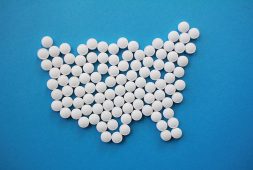
In a recent publication in Scientific Reports, researchers have reaffirmed previous findings that exposure to ozone (O3), a notorious air pollutant, has a profound impact on the expression of antimicrobials (AMPs) in the skin, both with and without tension.
Antimicrobial peptides, crucial players in innate immune responses, are short peptides ranging from 12 to 100 amino acids that exhibit the ability to combat a wide spectrum of pathogens. Earlier research demonstrated that O3 exposure triggers a redox-sensitive upregulation of AMPs, contributing to the development of inflammatory skin conditions.
Given that AMPs play a dual role in supporting skin immunity while contributing to inflammatory skin conditions like psoriasis and acne vulgaris, it becomes imperative to understand whether O3-induced AMPs inhibit or promote cutaneous inflammation.
Study Background
The World Health Organization (WHO) reports that approximately 91% of the world’s urban population breathes polluted air, resulting in over four million premature deaths annually. The United States Department of Agriculture (USDA) has classified air pollutants into six categories based on their physical and chemical properties, including carbon monoxide (CO), ozone (O3), lead (Pb), nitrogen dioxide (NO2), sulfur dioxide (SO2), and particulate matter (PM). Among these, O3 stands as the most hazardous and toxic, given its pronounced reactivity with the skin.
Numerous studies have documented consistently elevated levels of O3 in urban areas, ranging from 0.5 to 0.8 parts per million (ppm) during severe pollution episodes. Despite the WHO recommending a threshold of 0.05 ppm for ozone exposure, it is evident that 9 out of 10 individuals are breathing air that exceeds these recommended guidelines, signaling a pervasive issue of severe air pollution.
It is important to note that approximately 90% of ozone is naturally present in the stratosphere, where it absorbs ultraviolet (UV) radiation from sunlight. However, O3 also has anthropogenic origins. This ozone descends to the troposphere following its formation from photochemical smog – a reaction involving UV rays, nitrogen oxides, and hydrocarbons. This dual nature of ozone underscores its complex presence in both natural and human-influenced atmospheric processes.
Concerning the process by which O3 causes damage to the skin, it is important to highlight that it directly interacts with an oxidizes polyunsaturated fatty acids (PUFAs) and lipids in the stratum corneum (SC). This interaction results in the generation of aldehydes and reactive oxygen species (ROS), which further contribute to ozone toxicity and sustain damage in deeper layers of the skin.
The generation of ROS also initiates inflammatory responses, subsequently activating detrimental pathways, including pro-inflammatory transcription factors (NFkβ) and intracellular mitogen-activated protein kinases (MAPK). These pathways lead to the degradation of connective dermal tissue through the action of metalloproteinases, particularly matrix metallopeptidase 9 (MMP9), and other pro-inflammatory mediators such as interleukin-18 (IL-18) and IL-1β.
Various pollutants, including particulate matter (PMs), O3, and UV, can activate aryl hydrocarbon receptors (AhR). This activation, in turn, has the potential to further stimulate ROS production and intensify OxInflammatory tissue responses, creating a detrimental cycle of interaction between inflammation and oxidative stress.
The skin’s dermis contains elastic fibers, providing it with a level of mechanical elasticity crucial for maintaining a constant state of tension. This tension is fundamental in preserving skin integrity and flexibility. Additionally, mechanical elasticity aids the skin in fulfilling essential functions, such as the production of the extracellular matrix (ECM) and response to external stimuli.
Tensional homeostasis refers to the equilibrium between extracellular forces acting on skin cells (e.g., ECM) and the traction forces generated by the cells. This balance holds significance at both organ and cellular levels.
Researchers have devised various skin models to investigate cutaneous responses to pollution, including in vitro two-dimensional (2D) cell lines and 3D cutaneous models, in vivo models utilizing animal/human donors, and ex vivo skin explants. Each model comes with its own set of advantages and limitations.
While 2D cell lines offer cost-effectiveness, accessibility, and reproducibility, they fall short in generating the stratum corneum (SC), the outermost skin layer particularly impacted by O3 exposure. On the other hand, 3D models successfully form the SC but may not encompass all SC layers.
Currently, ex vivo human skin explants stand out as the most comprehensive model for examining cutaneous responses. They possess all skin layers, immune cells, and skin appendages, including sweat glands and hair follicles, responsible for producing antimicrobial peptides (AMPs). Unfortunately, even these advanced models lack the physiological tissue tension inherent in human skin.
About the Study
In this study, the researchers utilized the TenSkin™ model, employing ex vivo human skin explants cultured under physiologically relevant tension. The objective was to highlight the significance of skin tension in the interplay between the skin and environmental stressors, such as O3. Furthermore, the investigation sought to determine whether tensional homeostasis in the skin influenced the timing of the OxInflammatory cutaneous response to O3 in comparison to non-tensioned skin exposed to O3.
Drawing on insights from a prior in vitro study, the researchers formulated a hypothesis positing that O3 exposure induces upregulation of cutaneous antimicrobial peptides (AMPs) in tissues both with and without tension, primarily attributable to oxidative stress.
To conduct the study, skin explants were obtained from three healthy subjects, with 50% cultured under physiologically relevant tension (referred to as tension skin, Ten) and the remaining 50% without tension (designated as NT).
The researchers subjected these skin explants to O3 for a four-hour duration at a dosage of 0.4 ppm. Subsequently, skin samples were collected at specific time intervals – zero, three, six, and 24 hours, denoted as T0, T3, T6, and T24. The collected samples underwent comprehensive analyses, including assessments of proteins, RNA, and immunohistochemistry.
To quantify gene expression, the researchers utilized quantitative real-time polymerase chain reaction (RT-qPCR). This comprehensive approach allowed for a thorough examination of the impact of O3 exposure on the skin at various levels, providing valuable insights into the dynamics of gene expression in response to environmental stressors.
Study Results
While the present study could not pinpoint the reasons behind the heightened antimicrobial peptide (AMP) levels due to ozone exposure, it did establish that tension played a role in modulating the expression levels of AMP genes and proteins. Notably, cathelicidin antimicrobial peptide (CAMP/LL-37 and human beta-defensins (hBD)2/3 were specifically affected by tension.
The authors observed distinct responses between skin cultured under tension and non-tensioned skin when assessing OxInflammatory markers. These markers included cyclooxygenase-2 (COX2), aryl hydrocarbon receptors (AhR), matrix metallopeptidase 9 (MMP9), and 4-hydroxy-nonenal (4HNE).
The study’s findings confirmed a correlation between AMPs and oxidative stress markers during O3 exposure in tissues cultured both with and without tensional homeostasis. Furthermore, the researchers identified an expected increase (at T0 and T3) in certain protein levels, such as hBD3 and cyclooxygenase-2 (COX2), in non-tensioned skin compared to skin under tension during 03 exposure.
Conclusions
The present study reaffirmed earlier discoveries that pollution triggers the cutaneous expression of antimicrobial peptides (AMPs) through redox signaling. Crucially, this research also affirmed that utilizing skin biopsies is optimal for investigating skin responses. Consequently, the Ten Bio model holds promise for studying pollutants interacting with the stratum corneum (SC), conducting physiological tests, like drug delivery assessments, and scrutinizing aspects closely mirroring biological responses.
Subsequent investigations should prioritize collecting data on the molecular mechanisms governing cutaneous tension responses induced by environmental stressors, impacting AMP expression and oxidative stress. This focus is crucial for gaining insights into real-life scenarios and understanding the intricate interplay between skin tension, AMP expression, and environmental stressors.



